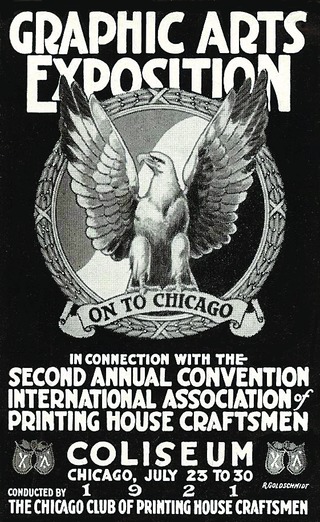Pressing On ... To Chicago!
What's in store at the 91st GRAPH EXPO? Heidelberg and Komori are back ... and Xerox may have an inkjet surprise for us.

As the 91st edition of GRAPH EXPO convenes, I find it a bit ironic that developers of the latest technologies always have desired early adopters. Trade shows are by no means a new marketing concept. Some religious scholars contend that merchant fairs existed as early as 600 B.C. According to Wikipedia, modern trading fairs follow in the tradition of those established in late medieval Europe, in the era of merchant capitalism, when produce and craft producers visited towns to showcase and sell their wares. Since the late 18th century, industrial exhibitions in Europe and North America became more commonplace, reflecting the technological dynamism of the Industrial Revolution.
For the printing trades, the precursor to GRAPH EXPO traces its roots to 1920, one year after alcohol officially was prohibited in the United States. (More on that in a few paragraphs.) Back in the Roarin’ ’20s, the event was called the Graphic Arts Exposition. It was held in the old Chicago Coliseum, not far from present-day McCormick Place, in conjunction with the annual convention of the International Association of Printing House Craftsmen.
I know this bit of print trade show history thanks to Joe Rickard, the “Sales Clinic” columnist for Printing News and a training consultant to the industry. (You can read his column here.) Rickard’s grandfather-in-law was A.F. “Gus” Oakes, vice president of the Charles Francis Press, which was based in New York City. From the 1880s through the 1930s, this firm was one of the nation’s largest printers, according to 50-year industry guru and retired RIT professor Frank Romano.
Ninety years ago, Mr. Oakes, his GM John Morrison, “machinery man” George Swart of George Swart and Co., and publicity/ad man George Oxley embarked on a two-week, 2,100-mile journey by car (a chauffeured Packard, to be precise) to attend the second annual Graph Arts Expo. If you think today’s travel is a nuisance, consider that in the early 20th century, logistics could prove challenging, to say the least. In 1921, for example, airplane travel wasn't yet commercialized and road infrastructure isn't what it was today. (My uncle remembers mending multiple flat tires on a 50-mile trek "to the country" in the mid-1930s.)
I remember phone books, but not prohibition
In a type-written journal documenting the trip, Oakes recalled staying in “the expensive suite in the Congress Hotel” and venturing out late one evening to meet up with a friend, Ed Bartlett, at the Blackstone Hotel. Keep in mind that this was only two years after prohibition had begun. In a room number mix-up, Oakes barged in on two “young men with a bottle of rye between them. Gus walked to the table and said, ‘Nice little party, isn’t it?’ and, taking hold of the bottle, [added], ‘Pretty good hooch, bottled in bond since the prohibition law became effective. By the way, don’t you know that the prohibition act is being enforced in Chicago?’” he dead-panned in his best impersonation of a federal agent. Once the truth was revealed, one of the surprised drinkers exclaimed, “Gosh, you’d make a peach of a prohibition inspector,” to which Oakes replied, “Hell, and here I thought I was a printer.”
That story reminds me of what someone from Fujifilm told me in the early 1990s: If you look in a post-1933 phone book (remember those?), he said, ‘Lithographers’ are listed right under the ‘Liquor’ heading. “And there’s good reason for that!” Remember, if this crazy business is causing your offset presses to consume too much alcohol, there’s always the isopropyl alcohol-free package to consider.
So, as the fictitious SNL character Wayne Campbell used to urge, “Party on, Garth.” Let the festivities, and the learning, begin. Just don’t over-imbibe – everything in moderation, ideas and knowledge included. Have a great show, everybody!
P.S. – For some retro print from the post-World War I Jazz Age, see “How’d They Print That?”



